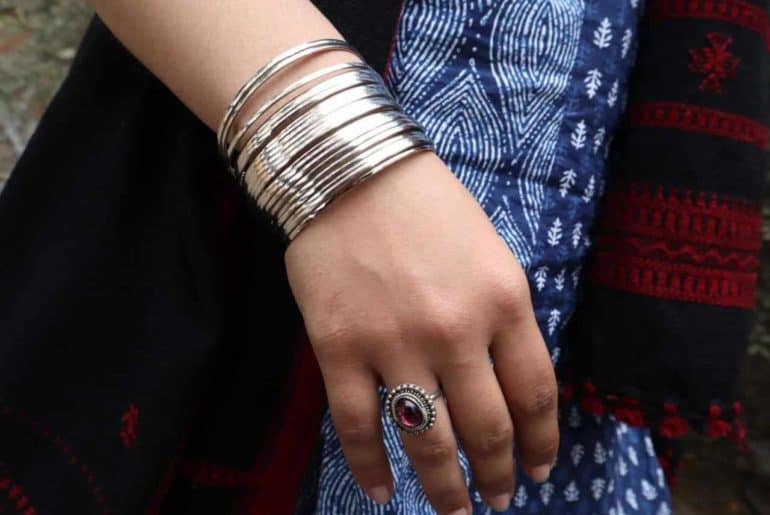While buying an expensive khadi kurta from the largest brands in humongous malls, we tend to forget the real roots of our ethno-Indian outfits. Ever wonder why?
The University of Delhi (DU) is a hub for street style fashion which transcends all boundaries. Every day, as students, we bring out our best fashion game in college, and in the wake of a recent epiphany, I believe that we have strayed into an obsession for ethnic clothing and accessories.
Kurtas, long skirts, suits, dupattas, stoles, jhumkas, nose-rings, neck-pieces, and even sarees have become very common in college. We spend lavishly on our outfits and accessories to look more authentic, grounded, and in a sense, more Indian. Many agree that the choice to wear Indian comes from a place of comfort. “Loose kurtas and palazzos are way more comfortable than wearing tight jeans and tops in summer,” says a student of a South Campus girls’ college.
However, in our wish to hoard more ethnic wear, we take part in the capitalistic tendencies of the market which bring out the hypocrisy of our world. While wearing a branded and expensive kurta with an equally expensive pair of jeans we call our outfits ‘indo-western’, which almost always are the products of elite stores in some bourgeois space.
As students, we also tend to let go of the actual ethno-syncretic root of this supposedly traditional clothing. The dupatta or shawl, that we so suavely wrap around ourselves to look fashionable and traditional, were tools of suppressing female sexuality, and furthermore were a demand made by the marginalised suppressed women, who weren’t allowed to cover their breasts. Similarly, a septum ring worn oh-so-proudly as a fashion statement has a history of being a symbol of subjugation and suppression of women, who were often compared to the cattle who wear similar hoops around their nose. In delusion and denial, we end up distancing ourselves from our history, only focusing on the materialistic hocus-pocus of it all, which in this case is: fashion.
As per reports, Fabindia doubled its sales in 2019; BIBA aims to reach revenue of INR 900 to 1,000 Crore by next year, while Aurelia, Global Desi, and Anokhi are becoming more popular over time. More and more students use outfits by these brand outlets to connect with their culture, and end up just benefiting the market strategies of these brands.
Understandably, these brands also aim at building market phenomenon focusing on this set of the young crowd, making traditional clothing more alluring and enticing, while keeping away the ugly realities of their profit-margins and labour markets, under strategically planned wraps.
Our ethnicity should not be defined by our fashion statement or emphasised by a fake ring in our nose which is not even pierced (Guilty as charged!). It should come from supporting those who actually build on this craft, and hence, support the real history and culture of our country. Undoubtedly, the potters who sell handmade vessels are more culturally conscious and informed than us heading for our farewell parties in an expensive Indigo saree, paired with black metal jhumkas, and all set to post a thousand pictures with #EthnicDayOut.
The Indian outfits to be bought from the craftsmen and weavers have been replaced with machine-made homogeneous print goods, exported to even other parts of the world. The same yellow ‘Om’ kurti is available in all stores by Anokhi, in India, and across the globe. So, next time we see a tourist roaming around in Rishikesh wearing that yellow kurta, decked with tons of rudraksha beads, and sporting a long red tika, think of how much of our ethnicity are we spreading, or how much of it are we losing?
Feature Image Credits: Namrata Randhawa for DU Beat
Sakshi Arora

